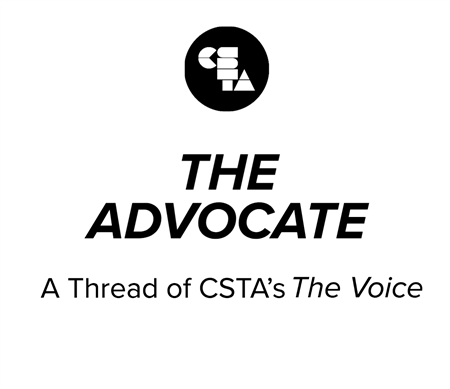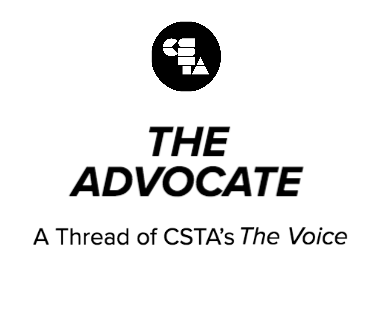
For the past few years, it has been exciting to watch CS education explode across the K-12 landscape with headlines like “33 states adopted 57 computer science ed policies since 2018” and “Fifty Nifty: Every state has adopted K-12 CS policy!” popping up in my newsfeed. The future seemed bright as more and more states adopted CS standards for students, even in K-8, which is where my heart lies.
Then, our world turned upside down … what does this mean for the hope of CSforAll in K-8 education?
Full Story
For the past few years, it has been exciting to watch CS education explode across the K-12 landscape with headlines like “33 states adopted 57 computer science ed policies since 2018” and “Fifty Nifty: Every state has adopted K-12 CS policy!” popping up in my newsfeed. The future seemed bright as more and more states adopted CS standards for students, even in K-8, which is where my heart lies.
Then, our world turned upside down … what does this mean for the hope of CSforAll in K-8 education?
Here’s some of what I’ve been seeing:
-
Schools are focusing on the core subject areas of math and language arts and maybe some social studies and science. Where does that leave K-8 CS?
-
Schools have done an amazing job getting devices out to students learning at home and addressing the issue of no internet access for some students. Still, not all students have access to online learning. Even if they do, they may be sharing a device or even using a smartphone. What does this mean for K-8 CS instruction?
-
Schools that are still attempting to teach CS are looking for ways to do it effectively when students are not in the classroom. How can unplugged activities, which are generally group-oriented, be modified to work well for individual students? What platforms and apps are safe and best and work well with the devices students have?
We don’t yet know what next year will bring but it probably won’t be what we used to call normal.
What if …
-
We continue with online/packet learning similar to what we are doing right now. And, what if many of the resources that were free during the “emergency situation” are no longer free. How can we continue and improve CS instruction?
-
Students are physically back at school but with social distancing. This might mean students are alternating days or times to be on campus or it might mean that all the physical spaces at the school are being used for core class instruction with fewer students per teacher. Since more teachers could be needed to allow for social distancing, specialist teachers and district CS specialists might find themselves back in the classroom teaching core curricular subjects. Is there a space for CS in this model?
-
Some of the students are at school every day and some are participating virtually. How can we provide equitable CS instruction in this case?
-
Core instruction happens at school with social distancing while specialty classes continue to be online or through packets sent home. How can we effectively teach CS in this scenario?
-
Somehow, someway we’re back in school and CS instruction is happening during the day. How can we ensure that shared devices (laptops, tablets, robots, etc.) are properly disinfected between classes?
As a champion of K-8 CS education, I believe there are things we can do to keep CS instruction in our schools even if the dedicated time for CS goes away. Now, more than ever, we should be thinking about how computer science content can be integrated into math, language arts, science, and social studies classes.
-
If you are a middle school CS teacher who ends up back in the classroom, think about using Bootsrap Algebra, Bootstrap Data Science, or Project GUTS.
-
Bring some Action Fractions into your 3rd- or 4th-grade math classes.
-
Integrate CS into language arts classes with curriculum from CS First.
-
Reinforce math and literacy in K-2 with ScratchJr.
-
Explore ways to infuse literacy in the K-5 classroom with CS.
-
Teach the K-5 CS Data & Analysis standards in math and science classes.
-
There are even more ideas about integrating CS into other subject areas in the #csk8 Chat Archives.
What are your thoughts on CSforAll in K-8 for the upcoming school year? How can we move forward even in these uncertain times? I’d love to hear your thoughts. Contact me @visionsbyvicky on Twitter and let’s continue the conversation.

Vicky Sedgwick
K-8 Representative




